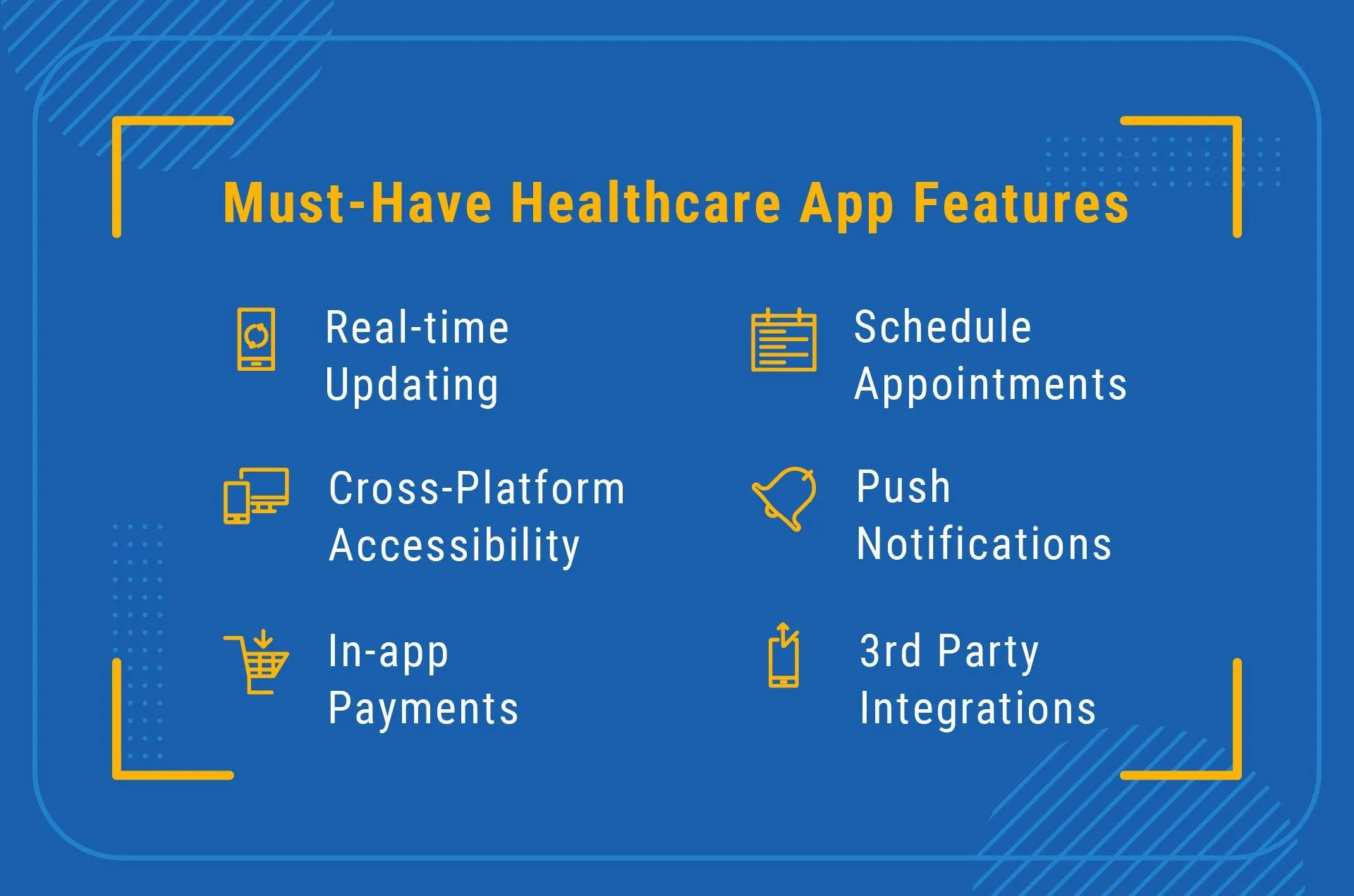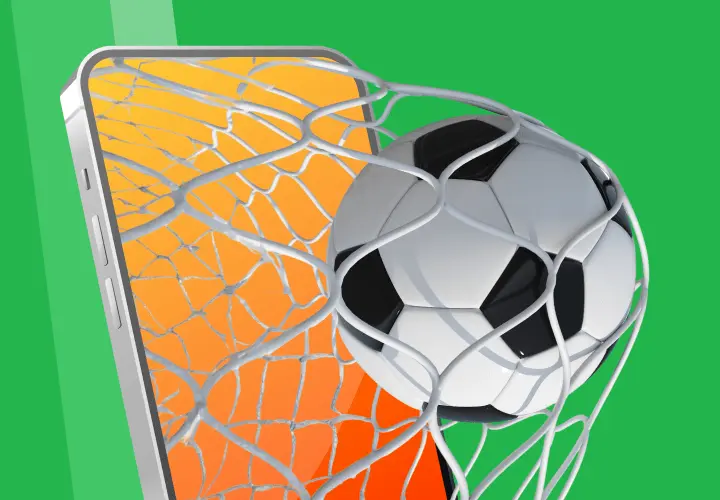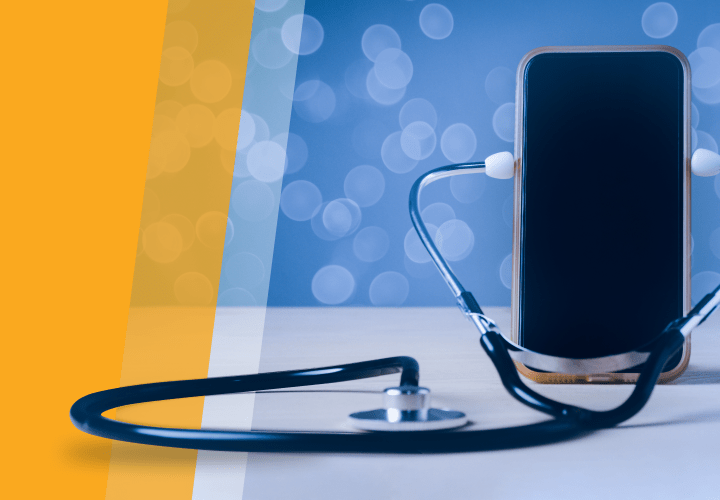Healthcare App Development in the Pandemic: How We Addressed Major mHealth Challenges and Contributed to Our Client Success
Table of contents
- What Are the Current Challenges Health Apps Need to Address?
- # 1: There’s a lot of fish in the sea yet a lack of edible
- # 2: ‘I pressed something and suddenly everything disappeared’
- # 3: Can I trust you?
- # 4: ‘Uncanny valley’ and a potential disservice
- # 5: Leave it to professionals but ease their work
- Let’s Look at Some of the Must-Have Healthcare App Features
- Real-time updating
- Cross-platform accessibility
- Push notifications
- Schedule appointments
- In-app payments
- 3rd party integrations
- The Bottom Line
Seeing a doctor in person not just takes a lot of time but quite often, also costs a lot of money. So there’s no wonder why people are looking for more efficient ways, like using healthcare apps. And it's not just about looking, but also sometimes choosing them over in-person visits: a survey conducted by digital health start-up Quin has found that 26% of the UK public would rather use health apps than visiting a GP or hospital.
It’s worthy of mentioning that the COVID-19 pandemic has become one more impactful driver for the rise in the use of healthcare apps. The same study showed that since the coronavirus pandemic began, the usage of healthcare apps has increased (by 37%), as well as has the percentage of people trusting diagnosis provided by these apps. Still, data received on the percentage of people who had ever used such apps personally showed that it’s only 11% of all the respondents, meaning that even despite the rise in the popularity of healthcare mobile solutions, existing apps still don’t match the public expectations.
So let’s start with a brief overview of challenges mHealth apps are facing today and then look at the must-have features of the modern solution from the perspective of a real-life case — an Uber-like app recently created by Emerline’s mobile dev team.
What Are the Current Challenges Health Apps Need to Address?
# 1: There’s a lot of fish in the sea yet a lack of edible
If you open the App Store or Google play to search for healthcare apps, you’ll get bombarded with hundreds and thousands of different offers. Still, how many of them can provide you with a real value?
The truth is that the rush for fast release and inadequate evaluation of competitiveness often leads to companies neglecting such important phases of idea validation, further analytics gathering and app enhancement, meaning that there are no attempts not just to determine if the app really helps users but also to somehow improve their experience. Thus, there's no wonder why data revealed by the StartupGrind research agency states that just 1 in 10,000 — or 0.01% — of all consumer mobile apps will be successful. In such a reality, it is a tricky task for both consumers and clinicians to pick the solution that can make a difference.
As we promised, here’s the example of how we address this challenge at Emerline.
First of all, when a customer contacts us with an idea on a napkin, we always offer our assistance in consulting and preplanning. The same we did when our company was contacted by US-based stakeholders with the idea of developing an Uber-like app for doctors. First of all, we analyzed the market and its regulatory requirements in the state chosen by the client, negotiated about the scope of work to quickly deliver a solution with limited yet critical functionality, and put efforts into meeting the client’s expectations in receiving an easy-to-use solution for handling medical documents. All in all, the consultation phase took about a month and a half. But it didn’t end there.
The coronavirus outbreak challenged the client and our team to quickly adapt to the new reality: think of a new solution concept or adapt the one we agreed on to the changing environment, and we decided on the latter. Making changes literally on the go, our team provided the client with a precious opportunity not just to release a healthcare app but also to add more value to it. Thanks to such an approach, the client’s solutions perfectly fit the market with its first release.
# 2: ‘I pressed something and suddenly everything disappeared’

Because the development teams are generally made up of young professionals, there are often cases when a healthcare app seems too complicated for elderly people who generally are not so profound in technology. Furthermore, not all US adults use smart devices, which means that mHealth is inaccessible to them. Meanwhile, exactly people of 65 and over are most likely to schedule physician visits (except for underaged). And with the spread of coronavirus and ‘stay-at-home’ becoming one of the most effective preventive measures, the necessity to provide all people with the ability to quickly and easily schedule a doctor’s visit has dramatically increased.
To address this challenge, our team has developed a simple, intuitive UI that is easy to understand and navigate for everyone. The app is not overwhelmed, is clear and very easy in use.
Furthermore, we have added the option to schedule visits for other people, so users can create requests for their moms, dads, grannys, grandpas — anyone. Information about these people is automatically saved in a user profile to offer more convenience for scheduling further visits in case of necessity.
# 3: Can I trust you?
Many of the existing apps have significant privacy and security shortcomings, and when it comes to scheduling visits for third parties, concerns are even higher. In other words, there’s still a long way to address the issues of data-sharing.
The app created by Emerline perfectly addresses third-party data-sharing issues. In case a user requests a visit by a doctor for another person, the visiting doctor will ask the patient if it’s ok to share their medical records with the requisitioner. If the patient agrees to share information, they provide an electronic signature and then, info about the visit with all documents and prescriptions attached becomes available in the mobile app of the requisitioner; if the patient doesn’t want to share their data, it is sent to the email provided by them.
# 4: ‘Uncanny valley’ and a potential disservice

It’s true that we live in a time when the advance of technology gains momentum and while some people are enthusiastic about it or just ok with it, others need more time to adapt and nurture their trust to the unknown and new. And while we are not talking about human-like androids that were described by the robotics professor Masahiro Mori when he introduced the concept of uncanny valley, there are still a lot of untrust and even fears associated with the use of technological solutions like AI for medical purposes. And actually, people have all the reasons for that. For example, the majority of apps for self-diagnosis fail to provide accurate results, which oftentimes leads to the increase of anxiety caused by the wrongly suggested by an app diagnosis among users and, obviously, result in their unwillingness to use them after.
Users of the solutions created by our team have no worries about the above-described issues as it doesn’t aim at self-diagnosis but just at providing them with a more convenient way of scheduling doctor’s visits. While in this case the challenge is not addressed in the direct way, it still gives the client a bonus of more trust. Still, even if the request for a health-AI solution comes, with a Research and Development department, we are pretty confident in our ability to make it as accurate as it is possible.
# 5: Leave it to professionals but ease their work
If we sum up all of the previously mentioned challenges, it becomes clear that clinicians are often not sure if they have to recommend some health apps to their patients. Still, the advance of technologies and their rapid adoption by the healthcare sector can actually work miracles to their job, making it more accurate, efficient, and satisfying. There are plenty of ways in which healthcare apps can provide these opportunities, leaving work to professionals while making it a bit easier and faster.
The app we delivered offers a doctor a number of benefits, starting from real-time notifications of scheduled visits and continuing with a custom EMR system that offers ease in handling medical documents.
Let’s Look at Some of the Must-Have Healthcare App Features
It’s true that healthcare apps are not created equal, offering a great variety of different features and functions. Still, if we analyze the core ones, it is clear that the following are must-have for every app:

Real-time updating
Up-to-date data is of high importance for health apps, and it should be provided to both patients and doctors. And for sure, we included continuous refreshment in our app to ensure the accessibility to the updated data at any time.
Cross-platform accessibility
To succeed, the app needs to be available for a wide audience, both web, iOS and Android (or cross-platform). The ability to be accessible from any device is foreseen in the delivered Uber-like app as well.
Push notifications
Good service is the one that constantly keeps a customer aware of what’s happening, and for this reason, we included push notifications for both doctors (about scheduled visits) and patients (notifications are sent 15 and 5 minutes before a doctor arrives).
Schedule appointments
Convenience is everything, so booking a visit directly from your mobile device is essential - and this is exactly the feature that illustrates the concept of the app we developed.
In-app payments
Appointments connected with bills save a lot of time for healthcare providers, and the ability to perform payment operations right in the app is appreciated by patients. In our solution, a user makes a payment right after a visit is scheduled, which frees the client from potential after-appointment fuss. Furthermore, all additional services (if there are any) can be added for real-time payment during the appointment.
3rd party integrations
Most healthcare apps are connected to various platforms, whether these are Google Fit, Samsung Health, Apple Health, etc. In the development of the Uber-like solution for doctors, we were focused on the provision of extra convenience in the delivery of services, integrating the app with the Veradigm ePrescription system that allows doctors to make prescriptions during the appointment right in the system and patients — to purchase prescribed medications in the nearest pharmacy.
The Bottom Line
Our experience of healthcare app development during the pandemic showed us that oftentimes, there’s no need for inventing something extraordinary and too complicated to succeed in the market. The solution we delivered to the client was developed in a short time, and it provided its owner with a great competitive advantage: timely provision of adapted to the situation services. Furthermore, potential business benefits also include:
- Group requests that allow receiving large orders. For example, it could be a wedding, corporate event, banquet, etc., where guests are required to provide a negative RT-PCR test.
- The client can receive fees for the use of the app by third-party providers that operate in other states.
- The developed custom EMR system with an easy-to-use custom document editor can also be sold as a stand-alone solution to third-party providers.
Interested in more project details? Here they are in our project portfolio case.
Are you also looking for ways to succeed with a tech solution? Feel free to contact us at any time and we’ll help you to get the most out of your tech ideas!
Published on Feb 7, 2023





